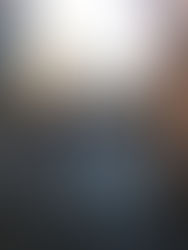Developing Creative Partnerships in Europe
- Peter
- Oct 16, 2017
- 5 min read
Everything is so well organised in the sedate, leafy suburb of Berlin where our Training Course – Step into Strategic Partnership – was located. Here, the public infrastructure is easy to navigate and the people are friendly. The regular and prompt U-bahn brought me to within 200 metres of the Hotel de France, a post-war cultural centre for German-French co-operation. The centre seems all glass and metal windows, large doors and spacious walking areas, in an open garden full of oaks, beech trees and squirrels, through which commuters walk and cycle daily. There is a community garden project at the end of the street (over which low-flying aircraft pass into nearby Tegel airport), and a clever, free Book Exchange using a converted phone kiosk.
Here is also found the large hotel, with a blue and white, Soviet-style design; a restaurant serving fine French cuisine; an art-house cinema and performance space, and a number of meeting rooms. It has the feeling of a converted utility building, with extremely friendly and multi-lingual staff from France and Germany.


The German national agency organised the training course which aimed to assist us all develop our KA2 Strategic Partnership projects. I had little knowledge of Key Action 2 Strategic Partnership (KA2 SP) before I arrived on this training course, even though I’d read the section in the Erasmus+ Programme Guide and had a vague notion of setting up a network at some stage. I had no clear project idea. There were 24 of us on the programme, all with varying levels of knowledge about KA2 SP – from those few who had a project idea and a number of partners in place, or who had already submitted at least one SP project in the past, to the tiny minority who had yet to learn the difference between KA1 and KA2. The majority were new to the area of Strategic Partnerships. They came from a wide geographical range from Turkey to Iceland, and Portugal to Moldova.
As it happened, two colleagues from our informal European youth theatre network were also attending – Juan from On&Off in Spain and Gregor from BiondekBühne in Austria. In the first days we three abandoned our individual sketchy ideas of working on solo projects and decided to collaborate on one project.

We asked each other what needs our young people had and we then designed a project that might meet these needs. It was very ambitious, and involved us tackling the European education system head on. Luckily, we had very useful sessions on quality, on assessing needs, and on innovation, and soon we abandoned that project and started a more realistic and achievable one. It took us a few days to refine it in response to the various training topics each day. Now, at the end of the week’s training, we are ready to prepare a project that creates a toolkit for youth-workers to use drama in their work in the field of social inclusion.
Because each of us is the main manager of our individual organisations, we were able to make key decisions about our project as the training unfolded. In one session on assessing needs, for example, we had to show that our project output (a drama for youth-work training toolkit) was actually needed by youth workers. So we designed a survey and combined our analyses of the sector in each of our countries.
In addition to the step-by-step guidance from the facilitators, we could avail of one-to-one feedback about our project. This we did, from experts in the German national agency (the wonderful Ingrid was clear, succinct, positive, and tremendously knowledgeable) and from the highly experienced facilitators themselves (who had successfully conducted several KA2 SP projects to date).
The training was intense and very focused. The fact that no-one missed any of the sessions any day, and were always in time for 9-hour days, showed a high level of engagement with it. Gabi and Laimonas used a variety of innovative methods to get us moving about, playing diverse roles, and using many forms of facilitation and teaching during the week.

By the end, everyone had a clear idea of their project. There were many innovative ones that struck me having the potential to make huge change in the lives of young people and communities across Europe. This is one of the key features of KA2 SP – it should have large impact, and really help promote key values (like social inclusion). It should not replicate what already exists, and should be created in response to proven and evidenced needs. There is a lot of work in developing a KA2 SP but it is worth it.
One project wants to create tools for youth workers working in rural areas of Moldova, Iceland and Lithuania who use coding and IT programs with young people in these areas.
Another wants to animate the national museum experience of Hungarian visitors by providing interactive performances for young people. A third is interested in helping integration of refugees in Poland by focusing, not on the needs of the refugees, but on the needs of the community. And another project wishes to develop theatre and creative resources that can be used in migrant education in Austria, and in working with Syrian refugees in Turkey.
Apart from the comprehensive learning about KA2 SP, one of the most profound experiences I had was talking to some of the participants over lunch and dinner. As a theatre-maker I am constantly curious about people and their lives and situations. Each evening I found myself beside someone different, and being very nosey, I asked questions. A stunning picture of a diverse and multi-faceted Europe began to emerge over the week. I learned about what it’s like to live under a political situation that is so tense that even mentioning it here may draw danger to people. Another night I talked to three women from former communist countries, who spoke about the legacy and impact of communism 20 years later – how in some areas women were more equal than they are in the west (a result of communist employment practice) but in others they are marginalised and side-stepped. Cultural differences remain in these countries, where people find it hard to speak in public as a result of years of oppression; but there was free education, a job and a car – something their parents say they miss. In another conversation I found out about the advanced, humane and highly intelligent practices the Netherlands have in helping those with disabilities in society. We are so far behind when it comes to the enlightened methods of the Low Countries. And of course, I discovered so many different and exciting theatre-making ideas from the people there who came from theatre companies (for some reason there were 5 of us).

I came away from these conversations realising how valuable a tool the Erasmus+ programme is, especially the Youth Exchanges, for integrating Europeans with each other. We should be doing more and more youth exchanges, study visits, job shadowing, and EVS - comparing practices, living conditions, models of working, and cultural values, that are often radically different from our own but from which we can always take something profound home.
.
I am very grateful to the Irish national agency, Leargas, for selecting me to attend this unforgettable week.
If our project (with the does-what-it-says-on-the-tin name of Drama for Youth Work) is funded by one of our national agencies, then expect to see resources in two years that you can use in your work. [Use every opportunity to disseminate!]






































Comments